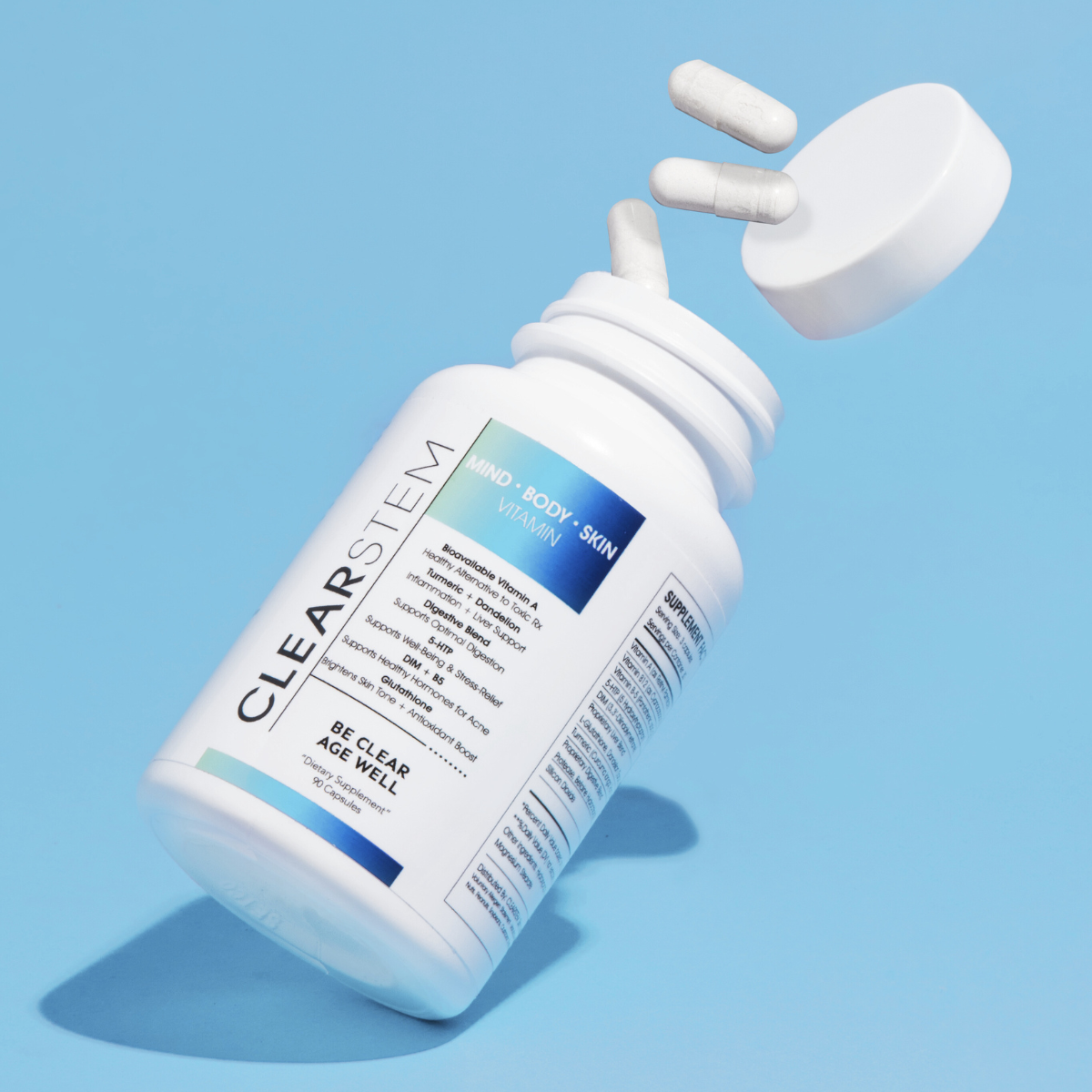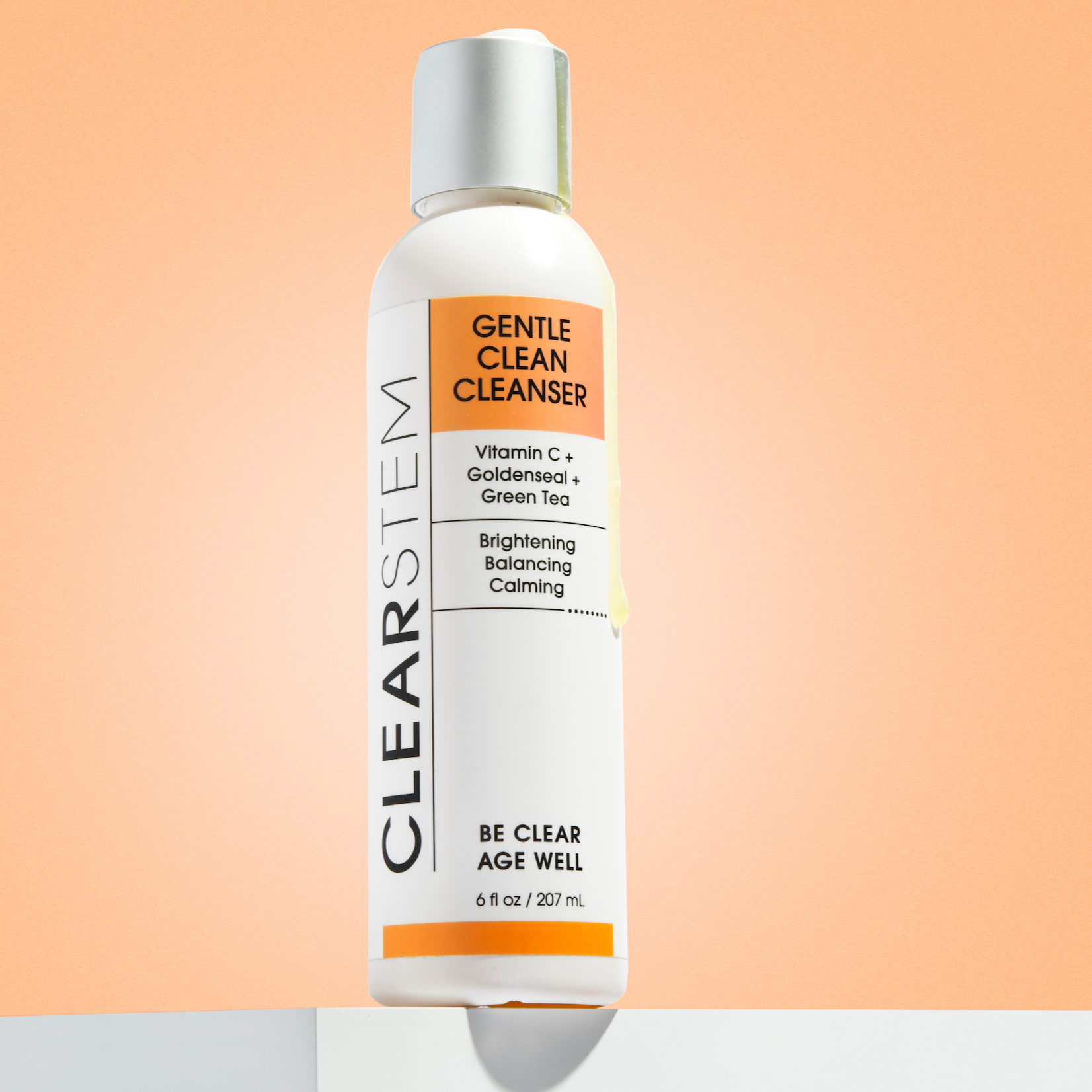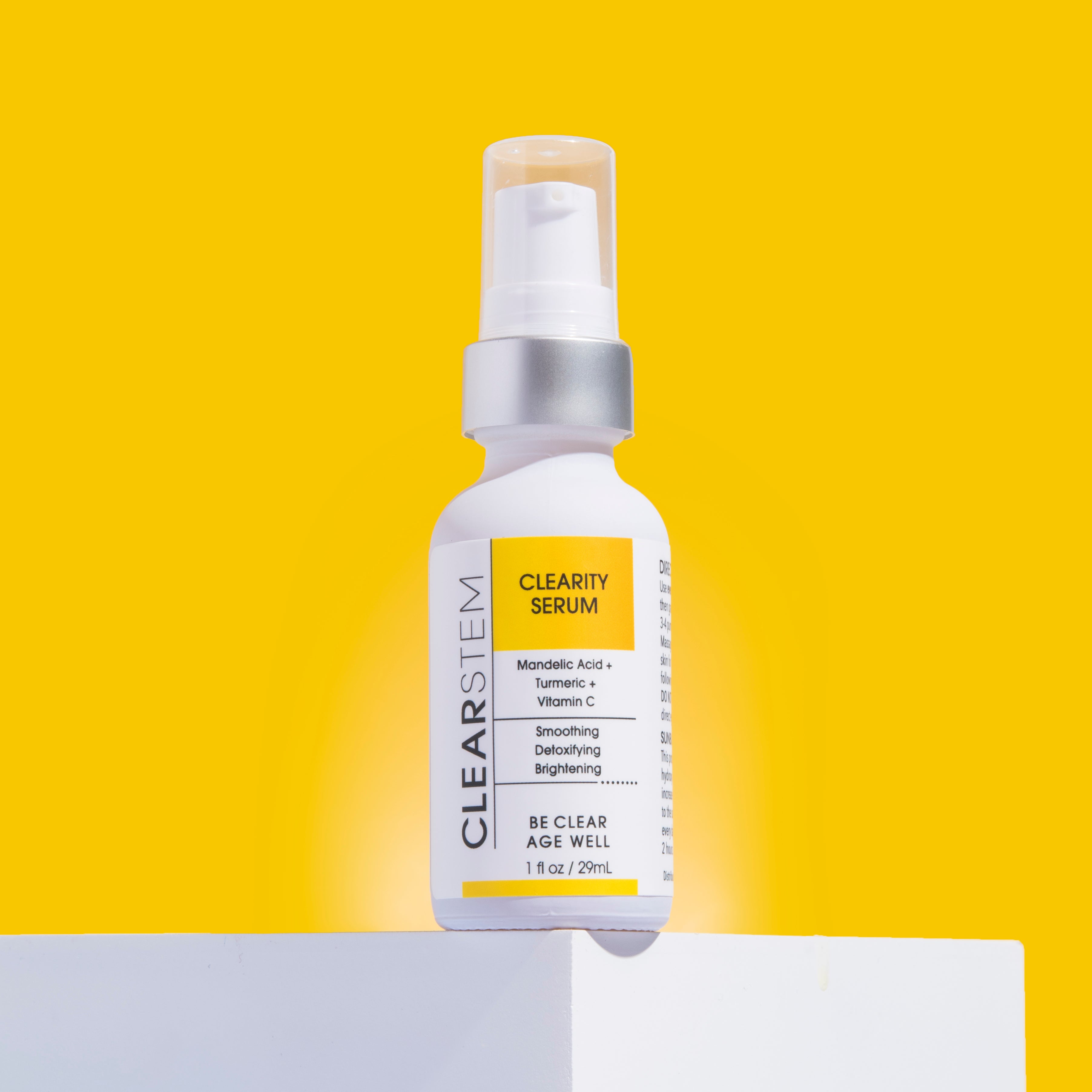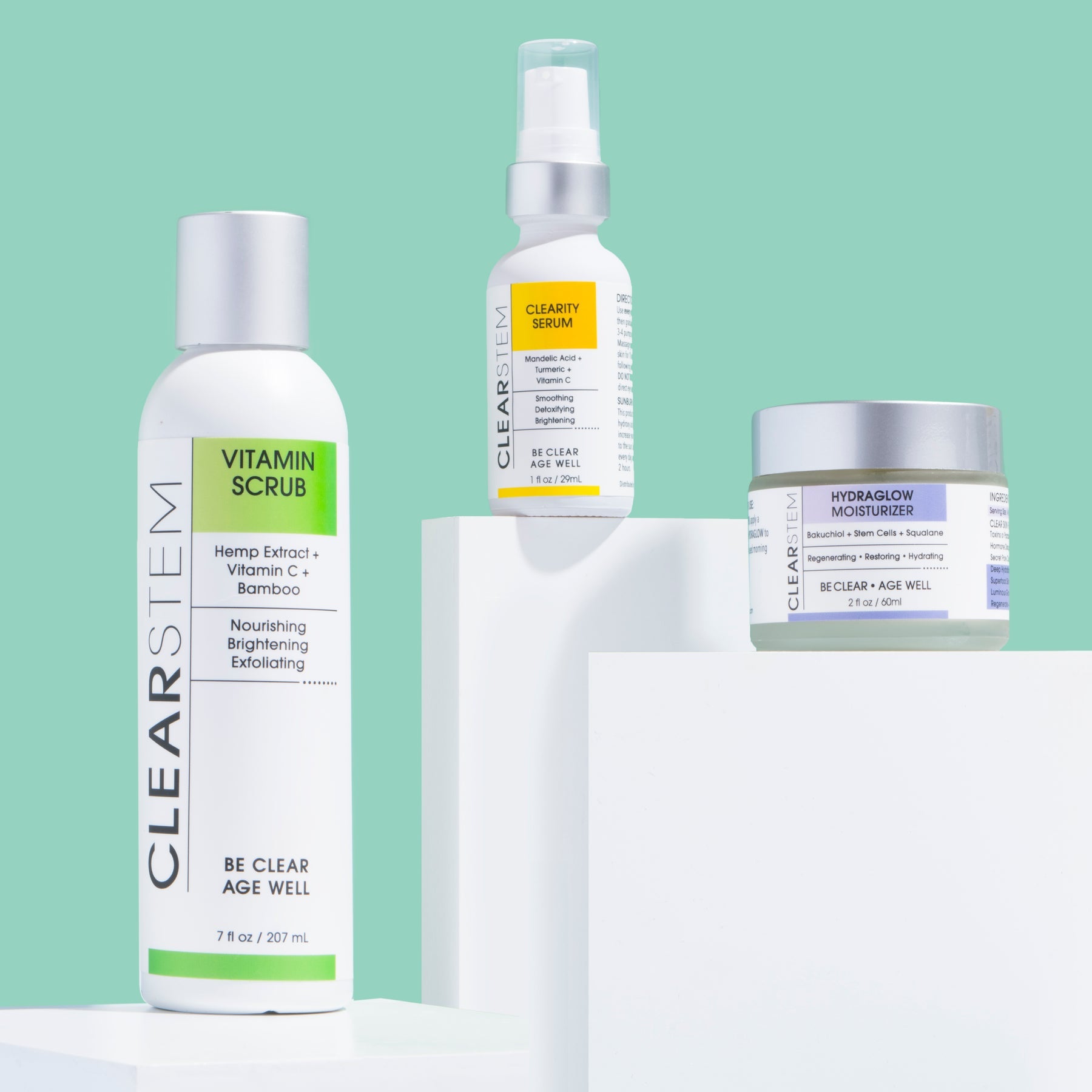As women, we’re no strangers to the unique struggles that seem to affect us on a monthly basis. We’ve accepted the fact that our uteruses sometimes feel, to put it politely, stabby during that time of the month. We also recognize that when the urge for dark chocolate hits, it’s best to not ignore it.
However, there’s one thing that we shouldn’t have to put up with, and that’s the numerous unpleasant side effects associated with a condition known as PCOS (polycystic ovarian syndrome). As a fairly common medical condition, affecting up to five million of us across the country, PCOS can be kind of a bummer. (1)
Not only can it cause hirsutism (that is, an excessive amount of body hair in the most awkward of places, like your face, chest, and booty), random weight fluctuations, hair loss on the head (known as “androgenic alopecia”), and irregular menstrual cycles, but it can also lead to an unwanted crop of acne on our faces and bodies, too. So what can we do about it? (1 & 2)
Fortunately, if you have PCOS-related acne, it’s not all gloom and doom. In fact, there are a few things you can do to help manage it, such as taking a hormonal acne supplement and monitoring your diet. However, before you can really tackle your PCOS acne breakouts head-on, you first need to fully understand what it is and how it’s affecting your system in the first place.
What is Polycystic Ovarian Syndrome (PCOS)?
So, what exactly is polycystic ovarian syndrome and how does it affect your body? In the most basic of terms, PCOS is a type of endocrine disorder (that is, it affects your hormones) that is denoted by the presence of cysts on your ovaries. While the exact cause of PCOS isn’t very well understood, one thing is for certain.
The presence of an elevated amount of male hormones in your body, known as “androgens,” is the bad guy who is culpable for all those unwanted side effects associated with this condition. These elevated androgen levels can be blamed for the random patches of hair on your body, the breakouts, and even other serious side effects (like high blood glucose levels and infertility). (1)
We know this can seem a bit overwhelming, so let’s go ahead and break down all the known information about PCOS together. Whether you have it yourself – or someone you care about has been struggling with unwanted acne breakouts due to PCOS – the more you know about this condition, the better armed you’ll be to reduce all of those unpleasant symptoms associated with it.
PCOS, Your Hormones, and Acne
As we mentioned a moment ago, PCOS is a type of endocrine disorder. This means that it can affect your hormones and throw them out of balance. When your male hormones (those androgens we were talking about) start to outweigh your female hormones (such as estrogen and progesterone), that’s when problems with acne breakouts can start to arise.
But what do these androgenic hormones have to do with acne and PCOS, and why does it matter so much in the scope of attaining clear skin? Well, whether you may realize it or not, androgens actually have a lot to do with your current breakouts. You see, when your body’s androgen levels rise, it starts to signal to your body that it’s time to kick the ol’ sebum production into overdrive. (3)
And sebum, as you probably already know, is just another fancy word for your skin’s oil. While sebum is necessary to help give your skin a healthy glow and keep it protected from outside moisture and chafing, if your body starts to produce too much of this oil, it can start to lead to clogged pores and congestion. But that’s not all that these hormones do, though. (4)
Elevated androgen levels can also increase a process called “keratinization.” This means that not only are your pores now teeming with excessive amounts of sebum, but there are also more skin cells joining the party, causing those pores to get blocked. Throw in a sprinkle of C. acnes (the bacteria that causes acne vulgaris), and you’ve got the perfect recipe for acne. (5)
PCOS Acne Pattern
Most, if not all of us, are no strangers to acne breakouts. However, when it comes to the unique type of acne that is associated with polycystic ovarian syndrome, you may start to notice a specific PCOS acne pattern starting to make an appearance. This isn’t just pertaining to the type of acne breakouts, either.
It also includes where they crop up on your body, too. If you’ve ever looked in the mirror and taken a hard look at your acne, then you’re already likely familiar with how these breakouts show up on your face and body. If it’s manifesting across your face in a “beard-like” pattern – that is, it shows up exactly where a beard might show up on your face if you were a fella – then it might be PCOS acne. (6) This happens because acne starts in the hair follicle and they are deeper for everyone on the lower half of the face.
Unlike typical acne breakouts, which tend to be a combination of open and closed comedones and pustules (those white-capped breakouts), PCOS acne is somewhat different. What does PCOS acne look like? These tend to be buried deeper beneath the surface of your skin, hard and pea-like, and not really coming to a head. (6)
These types of breakouts also tend to show up first in your mid-twenties. Now, this doesn’t mean that PCOS can’t be diagnosed sooner. But that said, if you’ve been noticing your acne creating a “beard” on your face, showing up on your chest and back and bum, and sticking around long past their welcome, then it just may mean that you have PCOS-triggered acne. (7)
Treating Acne Caused by PCOS
We’ve got some good news for you and some bad news for you here, friends. First, there’s the bad news: as it stands, there is no known cure for polycystic ovarian syndrome. But, on the upside, there are ways you can help manage the symptoms of it, and they are actually pretty simple to implement. (8) Many people find relief with the supplement called Inositol, but this should be evaluated with an endocrine or functional medicine professional who knows you and who you see regularly for follow-up visits.
In some cases, prescription medication can be beneficial. Some healthcare providers prefer to treat it with hormonal treatments, such as spironolactone. However, those come with a “use at your own risk” caveat slapped right onto the label, as the side effects of these drugs can be kinda iffy.
You can also look at dietary and lifestyle changes as a PCOS acne treatment option. These are safe, come with little to no risk, and don’t even cost that much to implement, which means that they can be a fantastic option for you. Some of the more effective ways that you can help reduce the symptoms of your PCOS include:
- Focusing on your health first and foremost. Some studies have shown that regular exercise, as well as trying to keep your body weight within healthy parameters and following a PCOS acne diet, can help reduce some of the symptoms of PCOS. (9)
- Work on balancing your blood sugar. This means starting your day with high protein and having protein with every meal. Androgenic hormones in excess can contribute to insulin resistance. High insulin levels tell the ovaries to produce even more testosterone, and thus a vicious cycle begins. Working to balance blood sugar by ensuring your diet is full of quality protein, complex carbohydrates, and healthy fats is a great starting point! (18)
- Introducing topicals to your skin. In addition to exercising regularly, certain topical treatments (such as alpha hydroxy and beta hydroxy acid vitamin C) can help minimize acne flare-ups. (10, 11, & 12)
- Trying anti-inflammatory supplements. Research has pointed toward PCOS acne supplements as being beneficial, and certain vitamins (specifically vitamins A and C), as well as turmeric, are a great choice when treating PCOS-related acne. (13)
- Pampering your skin like it deserves. We know that it gets tiring to be told to wash your face, but there’s merit to using a gentle cleanser, the right combination of serums, and keeping your hands away from your skin (no picking!) when trying to overcome PCOS acne.
One thing to keep in mind is that your body isn’t just some isolated amalgam of organs that just so happen to coexist inside a skin-suit. It’s a holistic system, and because of this, you should be sure to treat it like one. For instance, the link between your gut health and acne, as well as your liver and acne, are well known.
If you’ve been struggling with ongoing breakouts, it’s not a bad idea to consider a whole-body approach to managing it. This is, of course, regardless of if you do have polycystic ovarian syndrome or not. Taking good care of your body and being kind to yourself is more than just getting clear skin – it’s also a way of showing yourself the TLC that you deserve.
Other Issues Associated with PCOS
With PCOS, it’s unfortunately more than just a disease that can cause excessive body hair, irregular periods, and acne breakouts. Because it is recognized as a fairly serious endocrine disorder, this means that there are a few comorbidities associated with it. These other health issues that have been linked with PCOS include:
- Type 2 Diabetes. Type 2 diabetes occurs when the body is no longer able to either produce or use insulin like it once could. Unfortunately, statistics show that over half of women with PCOS will be either pre-diabetic or have full-blown Type 2 by the time they’re forty years old. (14)
- Obesity. There’s a number of reasons why women with PCOS may be at an elevated risk of obesity, but it largely boils down to the hormone imbalance itself, their predisposition toward fat storage (due to elevated insulin levels), and even metabolic dysfunction. If left unchecked, it can lead to high blood pressure, heart disease, and the aforementioned diabetes. (14)
- Mood Disorders. Because elevated androgen levels have been linked to changes in mental health, mood disorders such as BED (binge eating disorder) and depression are not uncommon in those with PCOS. Furthermore, because adipose tissue is endocrine in nature, it can also affect your mood and mental health. (14)
- Chronic Inflammation. This is one of those situations where researchers aren’t entirely sure if it’s a “chicken or the egg” kinda scenario, but studies have shown that the increased adipose tissue associated with PCOS can lead to chronic inflammation. In turn, people with PCOS may be more likely to be at an elevated risk for heart attack or stroke. (14)
Daily Tips for PCOS Acne Care
If you’ve been struggling with PCOS-related acne, then it’s understandable to want to get rid of it once and for all. In addition to speaking with your healthcare provider (ideally, one who specializes in endocrine disorders), there are a few other things you’ll want to keep in mind, as well. To help you manage your PCOS acne breakouts, why not try a few of these suggestions?
- Implement a gentle skincare regimen. You’ll want to be sure to wash your face both morning and night, as well as after sweating, to ward off breakouts.
- Don’t touch your zits, period. (Can’t keep your fingers off ‘em? Well, in your case, hydrocolloid bandages just might be your friends!) Instead, get the pimple patches and incorporate a sulfur spot treatment.
- Make sure your diet is healthy and balanced. Avoid foods that are oily and greasy, and try to eat a low glycemic index diet, as that can keep your insulin levels in check. (15)
- Don’t go to bed with your makeup still on. Even if you’re super tired, rinsing off the day and adding a light moisturizer before bed can make all the difference.
- Look into supplementation. Certain vitamins and minerals like Inositol can help restore hormonal balance, but be sure to check with your functional medicine practitioner or holistic provider before introducing anything new.
- If you don’t exercise, now’s the time to get started. Even gentle exercise, like taking a stroll around the block, can help lower acne-causing elevated insulin levels. (16)
- Make water your new BFF. While it may sound like bunk, research has actually shown that getting your recommended 64 ounces (or more!) of water can help flush out toxins. (17)
Now, remember that these tips aren’t a replacement for real-deal medical care. Instead, think of them as a little something extra that you can add into your day-to-day lifestyle to help minimize the side effects of your PCOS. By taking care of yourself and making your well-being a priority, you can help reduce your risk of breakouts and get clearer skin.
The Takeaway
PCOS is a serious medical condition, period, full-stop. Women who have been diagnosed with it can face a myriad of obstacles in their lives, ranging from not being able to have children to struggling with their hair and their skin. Because of this, it’s of the utmost importance to stay in touch with your doctor to find the best course of treatment for it.
While polycystic ovarian syndrome isn’t curable, the symptoms of it can be managed through dietary and lifestyle modification. By taking charge of your health and well-being, you can help offset those unpleasant side-effects of this condition. And in turn, you can feel confident the next time you look in the mirror – as well as feel great on the inside, too!
Sources
Source 1: PCOS (Polycystic Ovary Syndrome) and Diabetes https://www.cdc.gov/diabetes/basics/pcos.html
Source 2: Polycystic ovary syndrome and acne https://pubmed.ncbi.nlm.nih.gov/21076799/
Source 3: Profiling and Hormonal Therapy for Acne in Women https://www.ncbi.nlm.nih.gov/pmc/articles/PMC3969667/
Source 4: An update on the role of the sebaceous gland in the pathogenesis of acne https://www.ncbi.nlm.nih.gov/pmc/articles/PMC3051853
Source 5: Cutibacterium acnes (formerly Proprionibacterium acnes) and Shoulder Surgery https://www.ncbi.nlm.nih.gov/pmc/articles/PMC6874694/
Source 6: Hormonal treatment of acne vulgaris: an update https://www.ncbi.nlm.nih.gov/pmc/articles/PMC5015761/
Source 7: Adult female acne: a guide to clinical practice https://www.ncbi.nlm.nih.gov/pmc/articles/PMC6360964/
Source 8: Is there a cure for PCOS? https://www.nichd.nih.gov/health/topics/pcos/conditioninfo/cure
Source 9: Exercise and Polycystic Ovary Syndrome https://pubmed.ncbi.nlm.nih.gov/32342454/
Source 10: The effect of physically applied alpha hydroxyl acids on the skin pore and comedone https://pubmed.ncbi.nlm.nih.gov/26032934/
Source 11: Why Topical Retinoids Are Mainstay of Therapy for Acne https://www.ncbi.nlm.nih.gov/pmc/articles/PMC5574737/
Source 12: Vitamin C in dermatology https://www.ncbi.nlm.nih.gov/pmc/articles/PMC3673383/
Source 13: Does the plasma level of vitamins A and E affect acne condition? https://pubmed.ncbi.nlm.nih.gov/16681594/
Source 14: Are there disorders or conditions associated with PCOS? | NICHD https://www.nichd.nih.gov/health/topics/pcos/more_information/FAQs/conditions-associated
Source 15: A Low Glycemic Index and Glycemic Load Diet Decreases Insulin-like Growth Factor-1 among Adults with Moderate and Severe Acne: A Short-Duration, 2-Week Randomized Controlled Trial https://pubmed.ncbi.nlm.nih.gov/29691143/
Source 16: The Effect of Regular Exercise on Insulin Sensitivity in Type 2 Diabetes Mellitus: A Systematic Review and Meta-Analysis https://www.ncbi.nlm.nih.gov/pmc/articles/PMC4995180/
Source 17: Water, Hydration and Health https://www.ncbi.nlm.nih.gov/pmc/articles/PMC2908954/
Source 18: Insulin resistance and the polycystic ovary syndrome: mechanism and implications for pathogenesis https://pubmed.ncbi.nlm.nih.gov/9408743/











